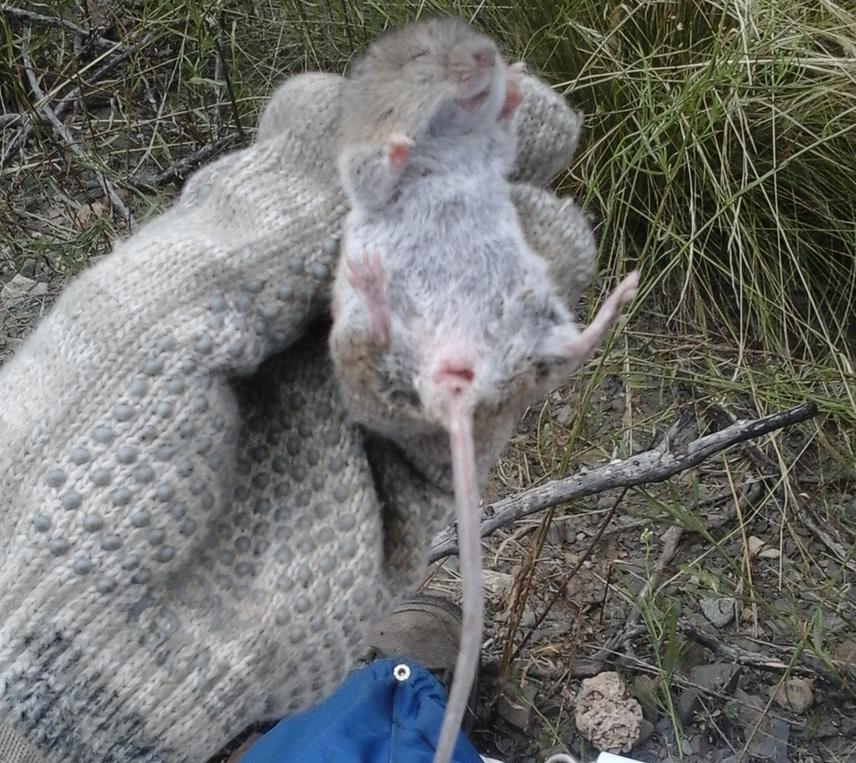María Daniela Rodríguez
Other projects
15 Nov 2007
Small Mammal Assemblages on the Monte Desert, Argentina: Relationship with Habitat Complexity and Assemblages Rules
22 Dec 2011
Effect of Land Use on Biodiversity Conservation: Generating Management Tools for Restoration of Desertified Arid Lands
The objective is to investigate the way that diversity of small mammals responds to changes on fire regimens to propose management tools in order to protect biodiversity.

Female of Calomys sp.
Previous studies on small mammal’s biodiversity show that the driest habitats of Monte desert, Argentina, contain the highest diversity (specific and functional) of small mammals (1ºRSG-Nº41.05.07). After these results, we investigated if a gradual change like grazing could affect these fragile ecosystems, and if so, the way it occurs (2ºRSG-Nº10862). We found a delayed effect of grazing over small mammal’s biodiversity and the presence of a degraded stable state that cross a grazing threshold (2ºRSG-Nº10862).
Besides grazing, fire is another widely distributed desertification factor. It can lead to the loss of the productive capacity, biodiversity and finally of ecosystem services of aridlands. Fire could affect not only the structure but also the functional roles that community plays on ecosystem dynamics. Particularly, one of the major challenges when dealing with prevention and remediation of desertification is to detect ecological thresholds as an answer to gradual (ie. grazing-2ºRSG-Nº10862) or persistent (ie fire-requested fellowship) changes. Detection of theses thresholds are key to determinate the resilience capacity of the system and the resulting need (or not) to restore ecosystem processes and/or services.
This study aims not only to evaluate the way biodiversity changes with land use practices (particularly fire), but also to integrate local needs with scientific knowledge to stop and, if possible, to reverse desertification processes. Our results will contribute to the establishment of management strategies of the protected area that promote conservation of dry systems and its local fauna. By protecting these extremely arid habitats on an integrated program we will ensure not only the protection of rare and endemic species, but also of the entire ecosystem.